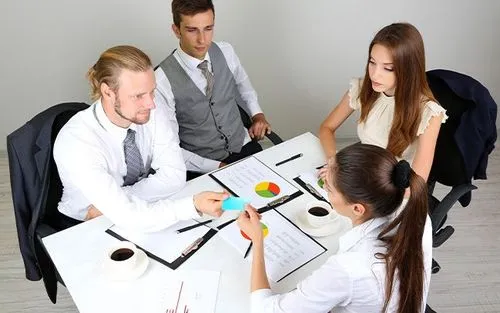ChatGPT: Unlocking the Power of AI Linguistic Models
An acronym for "Generative Pre-trained Transformer Chat," it is an advanced AI linguistic model that has burst onto the natural language processing scene with a bang. Built on the foundation of transformer architecture, it is designed to understand and generate human-like text, effectively mimicking natural conversations. What sets ChatGPT apart is its ability to process context, analyze patterns and produce consistent, contextually relevant responses.
How does ChatGPT work?
In essence, it works through a process known as unsupervised learning. This involves exposing the model to massive amounts of text data, allowing it to learn the nuances of language, grammar and context. Through this pre-training phase, it develops a deep understanding of various languages and topics, making it a versatile tool for generating text in a wide variety of contexts. ChatGPT's architecture consists of layers of self-attention mechanisms that allow it to weigh the importance of different words and phrases in a given input text. This mechanism helps to capture long-range dependencies, resulting in more coherent and context-appropriate responses.
Claude 2
A cutting-edge conversational AI system that represents a major leap forward in the field of chatbots. Developed with a solid foundation of machine learning and natural language processing, it is designed to engage in dynamic conversations with users. What sets Claude 2 apart is its ability to continuously learn and adapt from interactions, allowing it to deliver increasingly personalized and contextually relevant responses over time.
Adaptive learning mechanism
At the heart of Claude 2's capabilities is its adaptive learning mechanism. Unlike traditional chatbots, which rely on predefined responses, Claude 2 has the ability to learn from real-time interactions. Through reinforcement learning, it analyzes user feedback, evaluates user satisfaction based on the responses and adjusts its future interactions accordingly. This dynamic learning process ensures that this chat adapts better to users' preferences and conversation patterns, resulting in higher engagement and satisfaction.

Google Bard
This is an AI-based language generation model developed by Google. Unlike conventional AI chatbots, Google Bard focuses primarily on creative expression. Harnessing the power of advanced neural networks, it produces poetic and artistic texts that resonate with human emotions and imagination. This technology opens new horizons for creative writing, adding a touch of AI-generated art to literature, song lyrics and more.
Artistic expression through AI
Through extensive training on vast datasets of artistic works, Google Bard learns the intricacies of language, rhythm and feeling that underlie various forms of creative expression. This enables it to generate texts that evoke emotions, paint vivid images and capture the essence of human thought, all generated by an AI algorithm.
Comparison of the three chats
When comparing ChatGPT, Claude 2 and Google Bard, several noteworthy distinctions emerge:
- Functionality and purpose
- ChatGPT focuses primarily on natural language understanding and generation, making it versatile for a wide range of applications.
- Claude 2 emphasizes adaptability and personalized responses, enhancing user engagement in dynamic conversations.
- Google Bard stands out for its creative expression capabilities, aimed at people seeking artistic and poetic text generation.
- Learning mechanism
- ChatGPT relies on pre-trained models and large data sets to generate text.
- Claude 2 uses reinforcement learning, learning from user interactions to refine its responses.
- Google Bard employs neural networks to infuse artistic elements into its generated text.
- Use cases
- ChatGPT has applications in content creation, customer service and information retrieval.
- Claude 2 excels in dynamic conversations, making it ideal for chatbots embedded in websites and applications.
- Google Bard's creative outputs are used in the arts, literature and entertainment industries.
- The impact on conversational AI The emergence of ChatGPT, Claude 2 and Google Bard highlights the remarkable advances in the field of conversational AI. These AI chat systems have elevated human-machine interactions, fostering engagement, creativity and personalization.

Some frequently asked questions
Are ChatGPT, Claude 2 and Google Bard available for commercial use?
Yes, all three AI chat systems are designed for a variety of applications, including commercial ones.
How does Claude 2 adapt its responses during conversations?
Claude 2 uses reinforcement learning to learn from user interactions and adjust its responses accordingly.
Can Google Bard generate text in languages other than English?
Yes, Google Bard can generate text in multiple languages, which extends its creative reach.
Is ChatGPT suitable for generating artistic and poetic text?
While ChatGPT focuses more on natural language understanding, Google Bard is more suitable for generating artistic text.
What is the future potential of this type of chat systems with artificial intelligence?
The future holds exciting possibilities for AI-enabled chat systems to further refine their responses, improve personalization and explore new creative avenues.
In the evolving landscape of AI-based interactions, ChatGPT, Claude 2 and Google Bard shine as examples of innovation. Their unique features and capabilities address diverse needs, from generating coherent text to facilitating dynamic conversations and artistic expression. As these AI-enabled chat systems continue to advance, the possibilities for improving human-machine interactions will be limitless.








